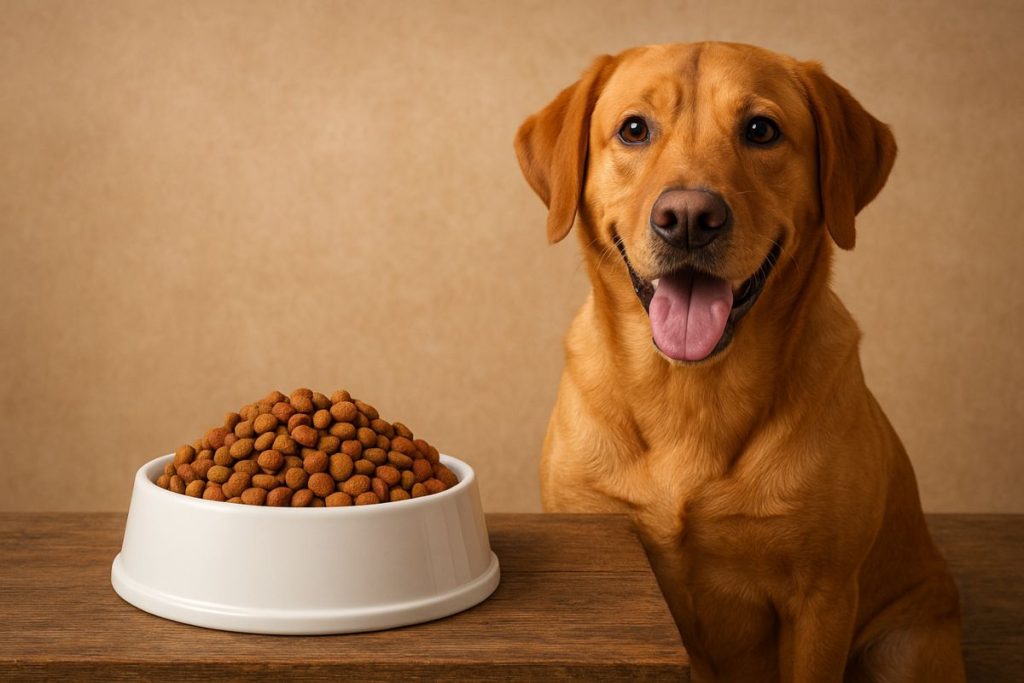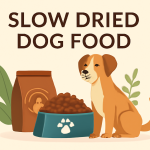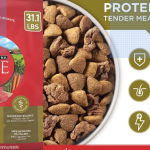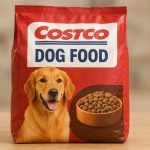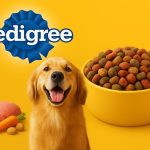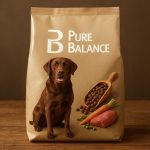Great. I’ll create a fully optimized, SEO-friendly blog post of approximately 4000 words on the topic: “Best Dog Food: Top Picks for Every Breed.” It will follow all on-page SEO standards for 2025, including keyword usage (primary: best dry dog food), proper structure, engaging headings, multimedia optimization, and a sectioned format with FAQs and product insights.
I’ll let you know as soon as the full draft is ready.
Meta Title: Best Dry Dog Food: Top Picks & Brands for Every Breed
Meta Description: Best dry dog food picks for every breed: explore top brands, grain-free formulas, wellness options, and expert nutrition tips.
Best Dry Dog Food: Top Picks for Every Breed
Dog enjoying high-quality kibble (best dry dog food). Finding the best dry dog food for your dog means balancing nutrition, taste, and budget. Dry kibble is popular for its convenience and long shelf life. When choosing kibble, look for foods labeled “complete and balanced,” which meet AAFCO standards for nutrition. A good dry diet should include high-quality protein, healthy fats, essential vitamins and minerals, and digestible carbohydrates (like whole grains or vegetables). Expert reviews note that top-rated dry foods – such as Open Farm’s grain-free grass-fed beef formula – often provide ~36% protein and premium ingredients. In this guide, we’ll cover how to pick the right dry food for every dog: by breed, size, life stage, and specialty needs. You’ll learn about leading brands (like Wellness and Orijen), the grain-free trend, and practical tips for reading labels and saving money.
Key Nutrients in a Balanced Dry Dog Food
When shopping for dry dog food, focus on nutrients rather than price or packaging claims. Veterinarians advise choosing diets that meet AAFCO guidelines (complete and balanced). A balanced dry kibble typically includes:
- Protein: Essential for muscle development and repair. High-quality proteins (named meats like chicken meal, beef, fish) provide amino acids and support a healthy immune system.
- Fats: Provide energy and help absorb vitamins. Look for healthy fats (animal fats, fish oil) rich in omega-3 and omega-6, which nourish the coat and skin.
- Carbohydrates: Sources like whole grains, oats, potatoes or peas supply calories and fiber. Complex carbs aid digestion and sustain energy.
- Vitamins & Minerals: Include vitamin A, D, E, B-complex, calcium, phosphorus, zinc, iron, etc., for bone health, nerve function, and overall wellness.
These nutrients should come from whole-food ingredients (meats, veggies, fruits) rather than unnamed “by-products.” When evaluating kibble, check the guaranteed analysis (on the label) to ensure adequate protein (often 25–30%+ for dry food) and healthy fat levels. PetMD notes that a good dry dog food contains a balanced mix of protein, fat, and carbs, along with the vitamins and minerals dogs need. In general, high-quality dry foods tend to list meat as the first ingredient(s) and avoid fillers or artificial additives.
Breed, Size, and Life-Stage Considerations
Dogs’ nutritional needs vary by breed, size, age, and health. Here are key guidelines:
- Small and Toy Breeds: Small dogs (e.g. Chihuahuas, Yorkshire Terriers) have fast metabolisms and need more calories per pound than large breeds. They also often prefer smaller kibble sizes. Look for small-breed formulas with higher calorie density and fortified nutrients. PetMD advises that small breeds require more calories per pound of body weight, so pick a calorie-rich kibble in “toy” or “small breed” size. Brands like Orijen and Wellness offer small-breed variants (e.g. Orijen Puppy Small Breed, Wellness Healthy Weight Turkey & Oatmeal Small Breed). Dry food is generally good for toy dogs – it helps keep teeth clean and is convenient. (You may combine a bit of canned food or fresh water for picky eaters, but dry kibble meets their needs well.)
- Large and Giant Breeds: Large breeds (Labrador, Mastiff, Great Dane) have different needs. Puppies of large breeds must avoid overly rapid growth. Specialized large-breed puppy formulas are lower in fat, calcium, and phosphorus to prevent developmental orthopedic disease. For example, the AKC notes that excessive growth in big puppies can cause joint disorders, so large-breed puppy foods limit fat/calcium and control calories. Once grown, adult large breeds benefit from foods with moderate calories and joint supplements (like glucosamine/chondroitin) to support bones and cartilage. A quality large-breed adult formula will help keep weight in check; notably, about 53% of U.S. dogs are overweight, and carrying extra pounds is particularly hard on big-dog joints. When feeding large dogs, measure portions and consider fewer kcal per cup to maintain a healthy weight.
- Puppies vs. Adults vs. Seniors: Puppies need growth formulas with higher protein and fat levels than adults, plus DHA for brain/vision development. All puppies (large or small) should be fed puppy-formulas (or “all life stages” if multi-dog). Adult dogs do well on maintenance formulas; active or working dogs may need performance blends with higher protein. Senior dogs (usually 7+ years) often benefit from reduced-calorie diets (to avoid obesity) and added joint support. While AAFCO doesn’t officially define a “senior” category, many brands market senior blends with glucosamine and antioxidants. Talk to your vet about switching to a senior formula if your dog has arthritis or slowed metabolism. In short, match the food to your dog’s life stage: puppy foods for growing dogs, adult foods thereafter, and senior formulas for older dogs’ unique needs.
Top Dog Food Brands and Formulas
Some dog food brands consistently rank among the best because of quality ingredients and vet endorsement. Here are a few noteworthy examples:
- Orijen (Dry Dog Food): A premium, grain-free brand known for very high protein (often 38–40% dry matter) and named meat sources. DogFoodAdvisor reports that Orijen’s dry food line (e.g. Original, Six Fish, Regional Red) is “Highly Recommended,” with each formula earning 5 stars. Each Orijen recipe uses multiple fresh meats/organs as dominant proteins. For instance, their Original formula has ~43% protein. Orijen earns top marks for quality—our vets often cite its lack of fillers and rich meat profile (and it counts as a leading grain-free dog food choice).
- Wellness Complete Health (Wellness dog food): A natural pet brand with grain-inclusive and limited-grain recipes. Wellness Complete Health formulas (chicken & rice, lamb & barley, etc.) provide a balanced diet for all sizes and ages. They use deboned meat, whole grains, and added supplements, with no meat by-products, no fillers, and no artificial preservatives. DogFoodAdvisor gives the Wellness Complete Health line mostly 4–5 star ratings, praising its nutritional balance. In short, Wellness dog food is known for high-quality ingredients and transparency, and many vets recommend it as a healthy staple.
- Open Farm Grain-Free: An example of a clean, ethically sourced brand. The Open Farm Grass-Fed Beef recipe (dry) is DogFoodAdvisor’s current #1 pick. It provides 36% protein and is “Recommended”. Owners often choose it for responsibly raised meat and limited ingredients.
- Blue Buffalo, Royal Canin, Hill’s Science Diet, Purina Pro Plan, etc.: These are widely used brands offering breed- or condition-specific lines. For example, Royal Canin has formulas for toy vs. giant breeds, and Hill’s has many vet-prescribed diets. (Always check ingredient lists; some of these have more grains or by-products than premium brands.)
Choosing the best brand for your pet: It often comes down to your dog’s needs and your budget. Brands like Orijen and Wellness represent the high end (nutritionist-formulated, higher cost), while others like Purina or Pedigree cover basic needs at lower cost. A helpful approach is to start with a high-quality brand’s maintenance formula, then adjust if your dog has food sensitivities or health issues. Reading reviews (our sources include vet panels and DogFoodAdvisor ratings) can guide you toward reliable picks.
Grain-Free vs. Grain-Inclusive Diets
“Grain-free” dog foods have grown popular—many owners see them as healthier or better for dogs with grain allergies. Grain-free foods replace cereals with potatoes, peas, lentils or other legumes. However, recent studies urge caution: The AKC and FDA have noted a potential link between certain grain-free diets and canine heart disease (DCM). In fact, one AKC report found 90%+ of diets in DCM cases were grain-free. These alert that many implicated foods were high in peas/lentils.
Pros of Grain-Free: Good for dogs with confirmed grain allergies; often higher protein. Examples include Orijen (grain-free) and many “limited ingredient” formulas.
Cons of Grain-Free: Can be more expensive; may use legumes that under some circumstances have been associated (anecdotally) with DCM. If your dog doesn’t need it, whole grains (rice, oats, barley) can be a fine source of nutrients and fiber.
Veterinary consensus: don’t feed grain-free without reason. For normal dogs, a quality grain-inclusive diet is fine. If you prefer grain-free, choose reputable brands that replace grains with nutrient-dense substitutes (not just starch). And always consult your vet if considering a grain-free diet for your dog. The key is variety and completeness – whether grain-free or not, a complete dry dog food should meet all AAFCO nutritional requirements.
Shopping Tips: Reading Labels and Saving Money
When evaluating dry dog food, read the label carefully:
- First ingredients: Look for specific meat sources (e.g. “chicken meal” rather than “meat meal”).
- Named ingredients: Brands that name their sources (Beef, Salmon, Turkey) over generic terms indicate transparency.
- Avoid fillers: Ingredients like corn, wheat, or unnamed “by-products” aren’t inherently bad, but top-quality foods often minimize them in favor of whole foods.
- AAFCO statement: Ensure the label says the food meets AAFCO’s complete and balanced nutrient profiles for your dog’s life stage.
- Store and feeding tips: Store kibble in a cool, dry place. Feed according to the label and adjust for your dog’s activity/weight. Free-choice (always-available) feeding is usually not recommended, especially for large breeds (multiple measured meals are safer).
Budget and Deals: Premium dry foods can be costly. To save: buy larger bags (per-pound cost is lower), use auto-ship subscriptions (many retailers like Chewy or Amazon offer 20-35% off auto-delivery), or look for discounts on breeder/pet store brands (e.g. Walmart’s 4Health, or Kroger’s PetIQ). Sometimes grocery/retail brands offer surprisingly good nutrition at a discount (always check their ingredient list). Joining a dog lover’s community or signing up for pet store newsletters can alert you to sales. Remember, the cheapest food may not be the best if your dog eats more or has health issues – investing in quality kibble can save vet bills later.
Frequently Asked Questions
- Q: What is the single best dry dog food?
A: There’s no one-size-fits-all “best” dry dog food. The right pick depends on your dog’s breed, age, size, and health. Generally, look for a high-quality brand with named meats and a complete formula. Many experts recommend brands like Orijen, Wellness, Blue Buffalo, and Hill’s Science Diet for their nutritional quality. Consider your dog’s needs and try a few (with vet approval) to see what keeps them healthy and happy. - Q: Is dry food or wet food better for my dog?
A: Both have pros and cons. Dry food (kibble) is convenient, shelf-stable, and can help keep teeth clean. Wet food (canned) provides more moisture (good for hydration and picky eaters). Many owners feed a mix: dry kibble as the base diet and occasional wet toppers. Overall, dry food alone can be perfectly fine if it meets all nutrient needs. - Q: Are grain-free dog foods healthier?
A: Not necessarily. Grain-free foods are essential if your dog has a diagnosed grain allergy. Otherwise, high-quality grain-inclusive diets are generally just as nutritious and often less expensive. Recent studies have linked some grain-free diets (especially those heavy in peas/lentils) to heart issues. Always consult your vet before switching to grain-free. - Q: How can I tell if a dog food is high-quality?
A: Read the ingredient list and look for high-quality protein sources (named meats first), whole-food ingredients, and no unnecessary fillers or artificial additives. Check for an AAFCO statement of completeness. Also consider brand reputation and reviews by veterinarians. Resources like DogFoodAdvisor or vet-verified reviews (e.g. PetMD) can guide you. For example, DogFoodAdvisor rated Orijen and Wellness highly due to their high meat content and balanced recipes. - Q: How much dry food should I feed my dog?
A: Follow the feeding guidelines on the bag as a starting point, then adjust based on your dog’s weight, age, and activity. Puppies eat more per pound than adults; working dogs eat more than couch potatoes. Monitor your dog’s body condition: you should feel but not see their ribs easily. It’s better to feed measured meals than free-feed (especially for large breeds). If in doubt, ask your vet to calculate the right calories for your dog’s profile. - Q: Should I consider a specialty diet for my dog?
A: Only if needed. Most healthy dogs do well on high-quality “regular” food. Specialty diets (grain-free, high-protein, hypoallergenic, etc.) are for dogs with specific issues (food allergies, kidney problems, weight loss, etc.). For example, senior dog foods often have joint supplements, and puppy foods have extra DHA. Always discuss special diets with your veterinarian.
Conclusion
Feeding your dog the best dry dog food means matching a high-quality diet to their unique needs. Focus on foods with wholesome ingredients, balanced nutrients, and a brand you trust. Grain-free diets can be fine for some dogs, but vets warn owners to research carefully on that trend. By considering your dog’s breed, age, and health— and consulting your vet—you can pick top-rated kibble that keeps your dog energetic and well-nourished.
Remember, diet is just one piece of pet care. Keep your dog active, groom them, and schedule regular vet check-ups. If this guide helped you, please share it with fellow dog lovers! We’d love to hear about your dog’s favorite food – drop a comment below or let us know on social media. 🐾
Sources: Authoritative pet-nutrition resources and expert reviews. (All claims about nutrition and brands are supported by industry research and vet advice.)

